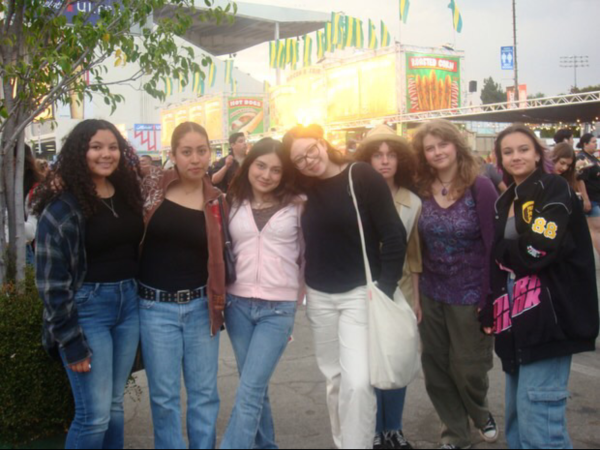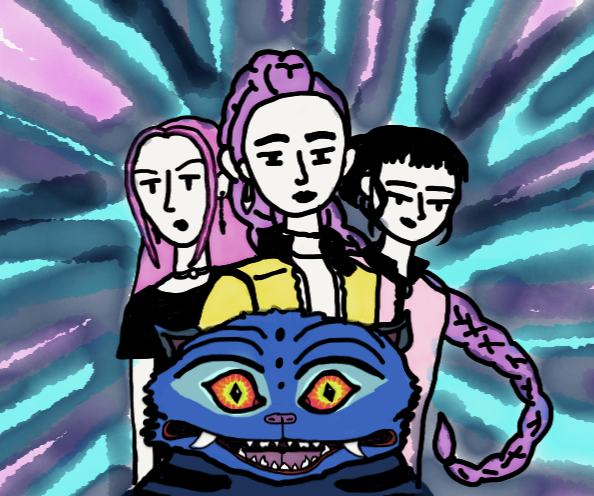“Admissions”: A conversation about inclusivity
Coming to the CHS stage on October 6th, 7th, and 8th is Claremont’s first extracurricular show of the year, “Admissions.” The play, written in 2018 by Josh Harmon, covers the subject matters of Affirmative Action and diverse representation in schools. Interestingly though, the small cast, consisting of only five members is “permanently and deliberately” all white, according to Harmon—who is also white. The irony behind a conversation about diversity and inclusion consisting of only white people is palpable; nevertheless, it is unfair to judge a play by its cast list, so it’s only right that a look is taken into the actual content of the script.
One prominent character is Charlie, a 17-year-old Caucasian boy that gets deferred (not rejected) from his dream Ivy League university, while his best friend Perry—who is biracial but never appears on stage—gets accepted. Charlie reacts to the upsetting news by going on a lengthy tirade full of misplaced blame as well as racist and sexist ‘reasons’ for his deferral, essentially claiming that affirmative action is the culprit. The scene is inundated with dramatic white-boy angst and self-pity. One line in Charlie’s raging monologue reads,
“Tell me how white I am and how disgusting I am, I’ll just stand in the corner taking it all in until I can’t f***ing take it anymore…”
He says these lines as if he, an upper-middle class, straight, cisgender white man, is the victim of a great and horrible injustice. Perhaps equally as bad as Charlie’s tone deaf and ignorant comments are the way the show is warped to make you cheer for him in the moment. He is presented as the tortured protagonist who was ‘snubbed’ from his dream school. The audience is meant to feel bad for him—to sympathize as he blames his whiteness and pushes for diversity for his failures. One CHS cast member, however, shared that they saw the scene and show differently.
“The play is tough to perform and to watch, but that’s the point,” the cast member said. “Its purpose is to empathize with a white perspective in order to spur change in white audiences.”
While this was likely Harmon’s intention with the show, one review of “Admissions” by critic Sarah Holden shared that audience members in her theater began to laugh and then cheer at this point for Charlie. She elaborates on how there is the implication that the audience members are cheering because Charlie is finally “saying what everyone is thinking.” Even though Harmon’s characters undergo a miraculous change of heart at the end of the play, any attempt at correcting their wrongs felt like an afterthought. The 180 shift in philosophy Charlie experiences is not only unrealistic but under-developed. It seemed as if the playwright’s best efforts went into expressing the characters’ disdain and ignorance surrounding increased diversity and the ending was his version of placing a bandaid on a bullet wound. Harmon’s attempts likely may be too little too late.
Affirmative Action has been a hot topic of debate for years. While the show concept of “Admissions” was certainly well-intended, the execution of the idea fell short in Harmon’s attempt to tackle such a complex and controversial subject. Furthermore, the choice of a school production that only allowed white-passing students the opportunity to audition, out of a multitude of other show options, seems counterintuitive to the message the production is meant to be sharing. This is not to say that Claremont’s production will be bad. Plays like these are often met with a standing ovation of audience members who will call the show powerful, amazing, and meaningful because of its emotionally intense address of a deeply polarizing topic; but one has to wonder, what meaning will they really take away? The audience will witness a show that contradicts itself and allows a space for harmful dialogue to be thrown around about minorities and people of color on an issue that surrounds them, while not having any presence in the production or creative process.
This is not to say that people shouldn’t go see the show—such instances are simply a reminder of the importance in being able to understand something’s intent versus its impact. Consider the impact of a conversation about inclusivity and equity being had without people of color. If the characters in “Admissions” concluded that, perhaps white people should take a step back to allow other groups of people to share their opportunities and perspectives, maybe the show ought to do the same thing.
Hello there! Our goal is to provide relavent, engaging journalism for readers of all ages. Your donation will support the student journalists of the Wolfpacket at Claremont High School, and will allow us to purchase equipment, print our monthly issues, and enter in journalism competitions. We appreciate your consideration!

This is Wobi Antoniolli’s (12th grade) first year as a reporter for the Wolfpacket, though she took an interest in journalism many years prior. Previously,...










